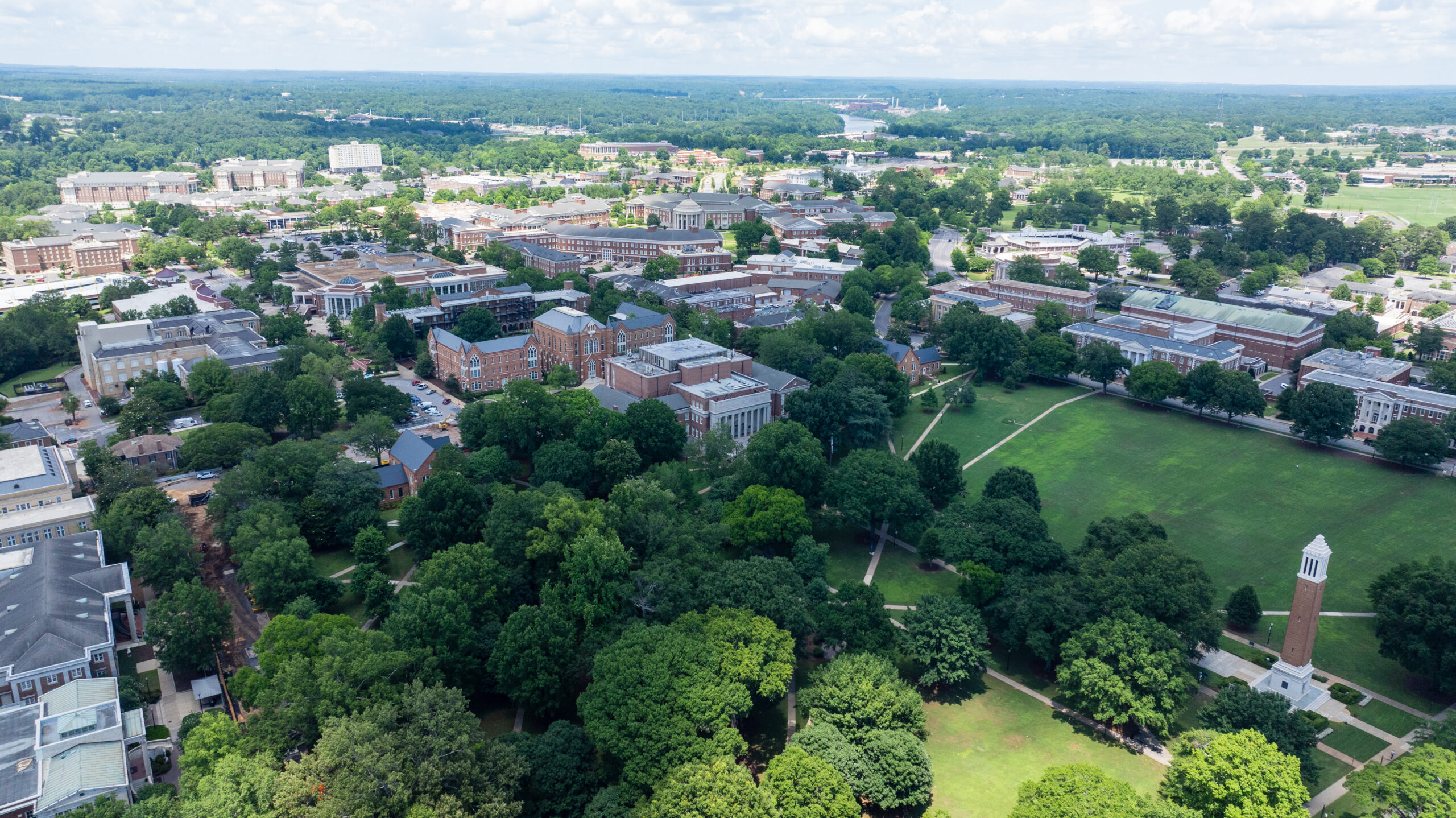
Jim Kennemer
Our Visionary
Jim is the benefactor of the James C. Kennemer Center for Innovation and President and CEO of Vision Research Corporation.
Jim grew up in Tuscumbia, Alabama. After his junior year in high school, a National Science Foundation scholarship took him to the University of Mississippi for a summer of higher-level math courses. Jim’s original college thoughts were in the Northeast, but when an application came for The University of Alabama’s new Computer Based Honors Program, he was intrigued. Ultimately, he was selected for one of the 10 fellowships in the 1968 charter class.
At UA, Jim earned a B.S. with a major in physics, and then an MBA. He served in various roles in his fraternity and in the SGA, and he was an SGA senator during graduate school. Honoraries included Jasons and ODK.
After leaving UA, Jim and a younger CBHer settled into the back of a warehouse in Birmingham and developed the first fully programmable payment processing workstation. Jim’s first sale of the system was to the largest bank in the country at the time, CitiBank, for their Wall Street operations center. Within a few years, banks, utility companies, and other large payment processors throughout the country acquired these systems, and at one point, roughly 12% of the U.S. GDP flowed through them.
After that company was acquired, England was trying to build its innovation base. Jim and a business partner pursued an opportunity there, combining several leading-edge technologies into systems that led to a company they and a couple of UK-based partners took public on the London Stock Exchange.
Back in Alabama, Jim continued with back-to-back companies based on significant technology innovations, disrupting report distribution and dedicated data entry system markets by leveraging the capabilities of early personal computers. These systems were widely adopted throughout North America, Europe, Australia and Southeast Asia.
As Jim was exiting one of these companies after Ross Perot’s EDS had acquired the IP rights to its systems, he came across a revolutionary technology developed by NASA that allowed children to be quickly screened for a wide range of vision problems. Unlike any prior form of eye testing, it required no response from the child, and was as fast as taking a photograph. He ultimately acquired an exclusive license from NASA for the technology and started Vision Research Corporation. To date, VRC has used this technology to screen almost 10 million children, identifying almost one million children with the indications of vision problems.
Jim grew up about a mile from Helen Keller’s birthplace, a fact that may have subtly influenced his path to playing a major role in children’s vision issues. Finding kids with possible vision problems and helping assure they get the care, glasses and treatment they need led to a new phase of his life. Channeling philanthropy to make a real difference began with start-up and early support for an organization to provide some of these services, followed by a major long-term philanthropic investment in another organization to provide large-scale screening in under-served areas, reaching children who needed this testing the most but were the least likely to get it.
Significant innovation has been a factor in every step of Jim’s career. In recent years, he has focused on ways to help create a new generation of innovators. The Center for Innovation is a major step in that direction.
Jim’s vision for the Center is expansive. One initial goal, through the center’s signature BIG Ideas program, is to provide students with a great foundation for becoming life-long difference-makers. Another goal is to provide a connection hub for the university with other academic, corporate, foundation and government innovation interests. Another goal, through the center’s “Study in Alabama Stay in Alabama” program, is to help assure that students know all of the great opportunities the state has to offer for both their career and their lifestyle goals.
Jim has served on a number of boards, public and private, U.S. and international. In the non-profit arena, he has helped seed and grow two significant organizations in the children’s vision care community, and he supports and serves on several other boards of organizations making a real difference in people’s lives. At UA, Jim is on the President’s Cabinet, the Honors College Board of Visitors (former chairman), and the board of Alpha Tau Omega. His business innovations have been recognized with honors including the Birmingham Area Business Person of the Year, and induction into the NASA Space Technology Hall of Fame. He has been Principal Investigator for NIH and National Eye Institute competitive research grants. He is also a Certified Barbecue Judge and lifetime member of the Kansas City Barbecue Society.
On the family side, Jim met Nancy Pettus while at UA, and they married in 1980. They have two adult children, Jim III and Lindsay Hackney, both UA grads, and two grandchildren.
